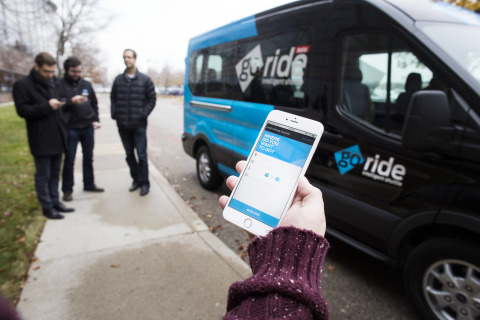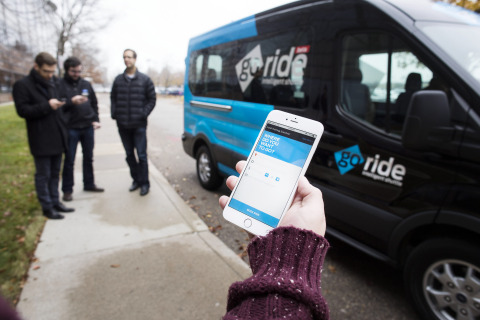DETROIT--(BUSINESS WIRE)--Ford and IBM are working together on a pilot platform that can spot patterns, correlations and trends to help consumers make more efficient transportation decisions – such as finding an open spot in a jam-packed parking lot or quickly advising of a more efficient method of transportation if a commuter is caught in an unexpected traffic jam.
The Smart Mobility Experimentation Platform allows Ford research scientists to look at tiny pieces of data – 10 or 15 seconds at a time – to spot tendencies and behaviors. Scientists can then write and refine code based on this. The platform uses IBM streaming analytics delivered via IBM’s Cloud to allow for continuous updating. This acts as the brains underpinning parking and shuttle services Ford is developing.
“Ford’s Smart Mobility Experimentation Platform takes huge amounts of information and breaks it down to help consumers have better travel experiences,” said Rich Strader, Ford director, enterprise and emerging information technology.
Take Ford’s newly launched Dynamic Shuttle service – now in operation for employees in Michigan. Should one of the Transit vans experience a malfunction that triggers a warning light, the platform will be able to start routing requests away from that vehicle to other Transits in service – allowing another shuttle to redeploy to keep all riders on schedule.
Using real-time analytics to coach people on efficient ways to use multimodal travel options, the cloud-based platform could allow Ford to take data feeds from various systems to learn, for example, of a problem on the subway. A commuter traveling in the network can then be advised to ride her bicycle to reach her destination on time.
As part of the company’s GoPark Painless Parking experiment, Ford is looking to deploy parking space prediction technology. With explicit permission from participants, Ford will collect data from cars coming and going from parking spaces in a defined area to predict available spots. The predictions are based on available city data plus observed parking patterns such as time of day and location.
When a driver is looking for a parking space, the technology will provide insight into parking spots that are available and legal to use – allowing the driver to avoid wasting fuel driving around looking for a valid place to park. The mobile application provided will include a parking enforcement feature that will benefit the city by supporting its parking enforcement activities – serving as a key element of new smart city initiatives.
By uncovering patterns, the platform will be able to guide a driver to an open parking space. For instance, a consumer leaving a store gets to her car and starts the ignition – the first step of a pattern. A few seconds later, she backs out and drives away – step two. At this point, a broadcast message can then be conveyed to other drivers entering the lot presumably looking for a place to park. The message can not only tell the driver there is an available spot, but also its precise location.
Ford and IBM’s technology is similar to that used in industries such as the stock market, where masses of data are aggregated quickly to enable rapid transactions. Energy providers use data to monitor grids, identify opportunities for predictive maintenance, and deploy crews automatically based on certain thresholds.
Reaching the next level in data and analytics is a pillar of Ford Smart Mobility – along with connectivity, mobility, autonomous vehicles and the customer experience – Ford’s plan to help change the way the world moves.
About Ford Motor Company
Ford Motor Company, a global automotive industry leader based in Dearborn, Michigan, manufactures or distributes automobiles across six continents. With about 197,000 employees and 67 plants worldwide, the company’s automotive brands include Ford and Lincoln. The company provides financial services through Ford Motor Credit Company. For more information regarding Ford and its products worldwide, please visit www.corporate.ford.com.
About IBM Cloud
For more information about IBM Cloud, visit: http://www.ibm.com/cloud-computing.




